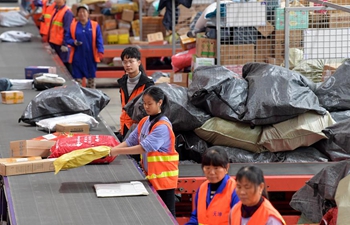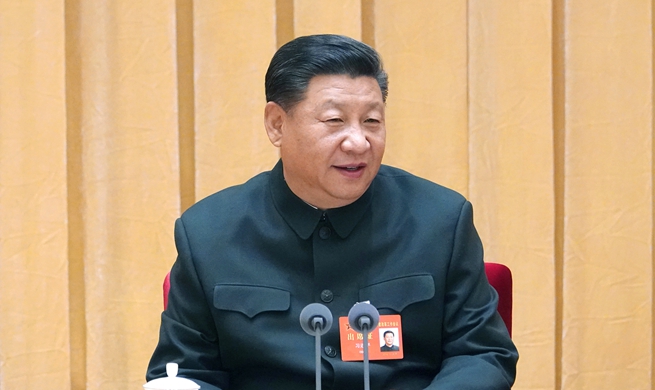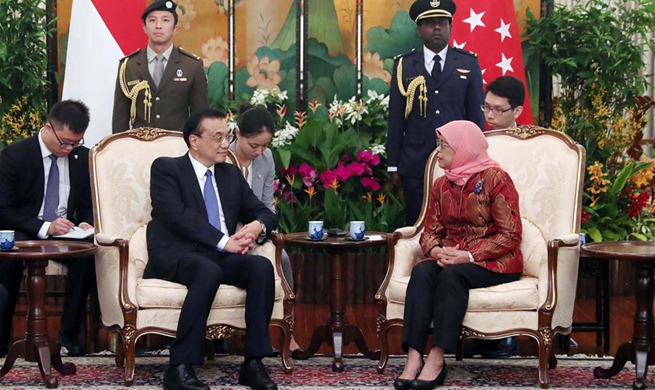NANNING, Nov. 15 (Xinhua) -- While many Chinese parents love to send their children to costly after-school English classes, Ruan Chunhua is considering a Vietnamese course for his son.
Ruan, a business woman in Pingxiang, a border city in south China's Guangxi Zhuang Autonomous Region, said the language had been a part of life for her family, given their almost daily interactions with Vietnamese business people and travelers.
After self-learning the language, Ruan is teaching her son basic Vietnamese, and said booming trade between China and Vietnam is making things easier.
"More and more Chinese are learning Vietnamese, so you can find all kinds of Vietnamese classes offered by training institutions in Pingxiang. Some schools also offer Vietnamese classes," she said.
Over 100 miles away at the Guangxi University for Nationalities in Nanning, capital of Guangxi, Li Yangyang was savoring his first encounters with the language of Malaysia, another southern neighbor of China.
Wearing a virtual reality helmet, the freshman was projected onto a simulated rostrum of a Malaysian university, where he introduced himself in Malaysian.
"After graduation, I hope to seize the opportunities of the Belt and Road Initiative and start careers in ASEAN countries," he said. The Belt and Road is a Chinese proposal to build a trade and infrastructure network connecting Asia with Europe and Africa.
ASEAN languages like Thai and Lao used to be a minority choice in China's foreign language colleges, but their popularity is in ascendance thanks to the country's booming trade and investment links with its Southeast Asian neighbors.
Trade volume between China and ASEAN countries hit a record high of 514.8 billion U.S. dollars in 2017, more than six times that of 2003. China has been ASEAN's largest trade partner for nine consecutive years, while ASEAN has been China's third largest trade partner for seven years in a row.
Jumping on the trade bandwagon, the number of China's ASEAN languages learners is on the rise, and renowned universities like Peking University and Beijing Foreign Studies University have opened majors for all ASEAN languages, according to Yang Xiuping, secretary-general of the ASEAN-China Center.
Universities in Guangxi, which has a booming cross-border trade with its neighbor Vietnam, are at the forefront.
Guangxi University of Foreign Languages, which has opened majors for six ASEAN languages, said the booming demand for bilingual expertise is behind the high employment rate of its ASEAN language graduates.
"The Belt and Road Initiative has brought immense business opportunities, but the biggest challenge in today's exchanges and cooperations (with ASEAN countries) are language barriers," said Zhu Guiling, of Guangxi University of Foreign Languages.
Su Fang, vice dean of the foreign language department of Guangxi University for Nationalities, also attributed the rising popularity of ASEAN language majors to the Belt and Road Initiative, which is sending more Chinese companies to open branches and offices in Southeast Asia.
Both universities say they are expanding their spectrum of ASEAN language courses, but are still struggling to cater to surging demand.
Tang Fenglin, vice general manager with a Guangxi-based company building logistic parks for China-Vietnam border trade, noted a strong and growing thirst of Chinese companies for workers conversant with languages of ASEAN nations, as well as their law, politics, economies and culture.
"Our company often sends people to colleges for graduate recruitment, but we are still running short of Vietnamese-language workers," Tang said. "To survive, we had to set up our own training courses."

















